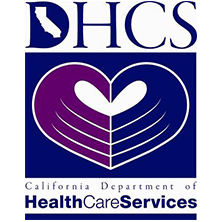Long-Term drug and Alcohol addiction treatment centers in California have become more prevalent in the last five years. Over and over, clinical studies have proven the greater efficacy of long-term treatment for drug and alcohol dependency versus shorter-term (i.e. 30 day) treatment. Across the state of California, literally hundreds of treatment centers decorate the coastline, each offering a unique twist on a month’s worth of holistic treatment for substance abuse. Forthcoming are specialized outpatient clinics, geared towards the busy professional who simply cannot take time off from work to treat the bohemouth, life-threatening illness known as drug addiction.
Long-term drug treatment centers are rapidly becoming the norm, especially in California. These days, most long-term treatment centers in California are comprised of thirty days in an acute, primary care facility, followed by a ninety day period of extended care, and tailed by a transition to the program’s sober living home, interspersed with weekly check-in and/or process group therapy, as needed. Clinicians throughout the field agree that continuum of care for the recovering addict or alcoholic is not a luxury, nor the prescription for the direst cases, rather, it’s a necessity, a mandatory ingredient for maintaining continuous, long-term sobriety.ia
California Drug Rehab
Perhaps the reason that California drug rehab and long-term drug and alcohol addiction treatment centers are gaining popularity is because of the staggering impact of chemical dependency on our government’s offers. According to a recent study performed by the National Center on Addiction and Substance Abuse, CASA, researchers were able to quantify an amount spent by all levels of government, federal, state and local, on addiction and substance abuse; this is the first time any type of economic analysis has ever attempted to ascertain the dollar amount addiction costs American society.
Findings indicate that “of every federal and state dollar spent, 96 cents goes to shovel up wreckage of illness, crime, social ills; only 2 cents goes to prevention and treatment.” Thus, of the near half a trillion tax dollars spent in 2005 alone on substance abuse and addiction, only a paltry two percent of the funding was allocated towards drug rehabilitation, a statistic that’s literally howling for policy reform. To date, the vast majority of policy for a chemically dependent America has been focused on prevention and interdiction, with far fewer efforts aimed towards actually treating the already addicted patient. Research is beginning to show that drug addiction and alcoholism are giving way to a mounting public health crisis, and that long-term treatment centers in California might be the only way to quiet the epidemic.
There is a startling contrast between twentieth century First Ladies’ opinions on how to tackle the addiction issue: in one corner we have former first lady, Hilary Clinton claiming, “our insatiable demand for illegal drugs fuels the drug trade,” while in another, we watched Betty Ford struggle with, and eventually conquer, her battle with alcoholism, proceeding to found and fund what would become one of the nation’s leading treatment centers. Then again, who could forget Nancy Regan’s earnest attempt to convince children to “Just Say No” and the exorbitant amount of federal dollars we spent on its proclamation, to little or nearly no avail. In a post- Just Say No- slogan era, drug use has peaked at an all time high, partially due to the rising popularity of prescription drugs and their availability on the Internet. The advent of Vicodin and Valium for sale on the world-wide web ushered in a new era of drug abuse, wherein addicts could circumvent dealing with unsavory dope slingers and merely surrender their credit card information online to a fast-track pharmacy that provided overnight delivery service, an in-home dealer suddenly a mouse click away. Clearly the solutions current policy is offering are not working for the over fifteen million Americans who find themselves feeding a habit and in need of drug and alcohol treatment centers in California.
Historically, short term, month-long rehab stays have not provided a substantial ‘cure’ for the disease of addiction and alcoholism; research indicates long-term drug and alcohol treatment centers are proving themselves significantly more effective. Studies have shown, repeatedly, that the longer a recovering person is exposed to rehabilitation and treatment, the better chances that person has of maintaining abstinence.
The number of drug and alcohol treatment centers in California far exceeds that of any other state in the country, with Orange County being one of the most concentrated areas for long-term treatment. Many long-term care treatment programs are run on the phase system, commencing with 30-45 days of intense, cognitive behavioral therapy, both in a group and individual setting, wherein the last month of treatment is spent focused on obtaining employment and life skills, with a gradual return of privileges as each goal are achieved. One such model is found at Safe Harbor Treatment Center for Women, in Costa Mesa, California, which offers what you are looking for in a Long- Term Drug Treatment center in California.
At Safe Harbor Treatment Center for Women, founder Velvet Mangan offers unique insight about the clinical, emotional, spiritual and physical benefits of long-term drug treatment in California when she says, “Thirty days rarely offers enough time for the client to redevelop her self-esteem; at least ninety days are needed in order for the young woman to reposition her mind to make different choices and learn healthy habits. The subconscious mind requires time to change, and if that process is short-circuited, her recovery could be sabotaged.” Long-term treatment centers in California runs the gamut from private pay (like the aforementioned, affordable Safe Harbor) to complimentary (albeit, often compulsory) county-funded programs, with managed care options filling in the gaps.
Overcrowding in California state prisons and budgetary constraints were largely responsible for the introduction of Prop 36, wherein legislators ostensibly admitted, and “We no longer have room for you drug offenders behind bars, so guess what- you’re cordially invited to go to treatment.” The treatment approach has dramatically changed the landscape of our judicial system and has resulted in fewer drug-related crimes, a statistic that Republicans and Democrats alike are lauding. Long-term treatment centers in California are on the rise, what with the demand, due to Prop 36, and with a more results-focused approach to conquering addiction and alcoholism. Doctors and addiction specialists agree that some form of continuum of care is necessary for recovering citizens to remain abstinent, and though the preferred settings may vary, ranging from monitoring to outpatient to the more robust, inpatient residential programs, both seasoned practitioners and rehab veterans have experienced greater degrees of success when long-term treatment is followed through to completion.
START YOUR JOURNEY WITH
SAFE HARBOR HOUSE
(310) 861-4157
Contact Us Today
Verify Your Insurance




